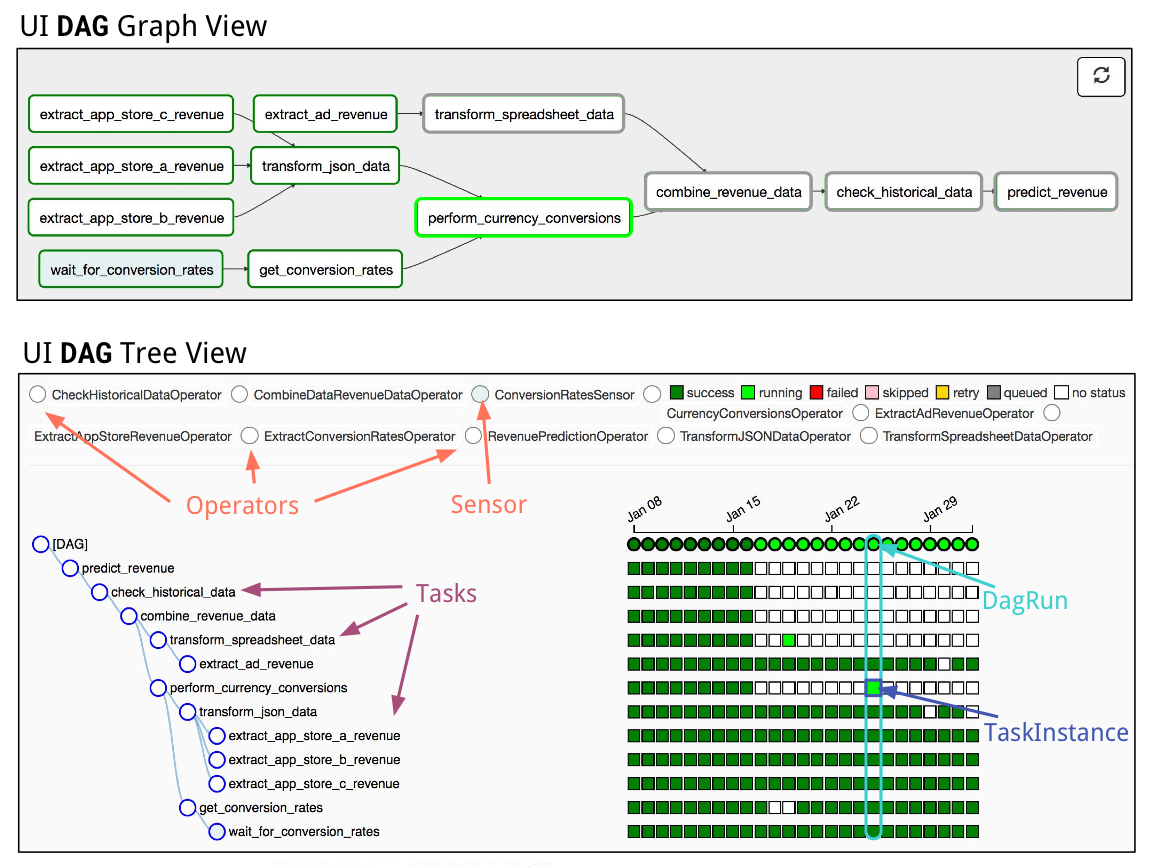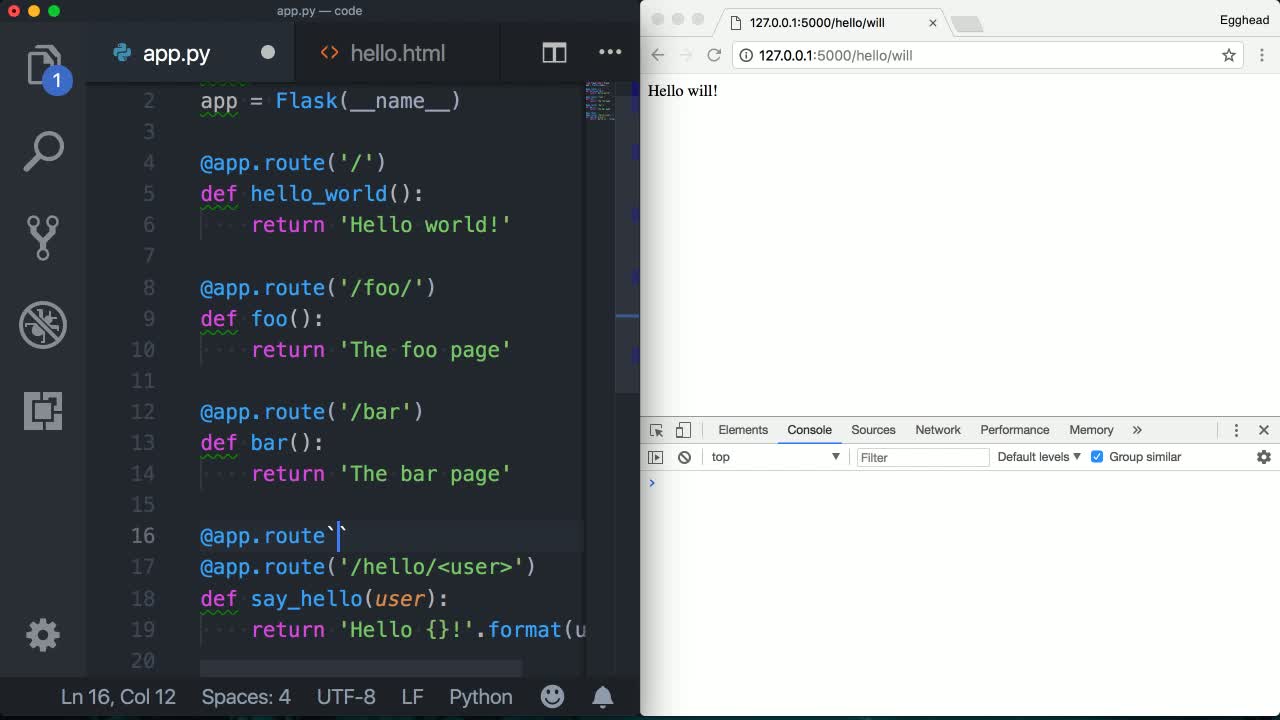Airflow Jinja Template
Airflow Jinja Template - { { conn.test_conn }} so you get any connection attribute like: Which operator fields can be templated and which cannot. My question is does anyone know the requirements to get rendered strings into the ui under the rendered or rendered template tab? Web templates reference¶ variables, macros and filters can be used in templates (see the jinja templating section) the following come for free out of the box with airflow. In our case, we tell jinja to replace {{ execution_date }} by the value of the variable named execution_date inside the bash_command parameter. It could be a bash_command parameters in a bashoperator as following using jinja template in a op_args or op_kwargs in a python operator def my_sleeping_function (**context): Web using airflow jinja to render a template with your own context jinja is well explained when using with operators which has support for a template field. Which variables and functions are available when templating. Web airflow leverages the power of jinja templating and this can be a powerful tool to use in combination with macros. Web i've been able to successfully render jinja templates using the function within the baseoperator, render_template. In this guide, you'll learn the following: How to apply jinja templates in your code. Which operator fields can be templated and which cannot. For example, say you want to pass the start of the data interval as an environment variable to a bash script using the bashoperator: Now is possible to create a jinja2 template with a parametrized name. Which operator fields can be templated and which cannot. In our case, we tell jinja to replace {{ execution_date }} by the value of the variable named execution_date inside the bash_command parameter. How to apply jinja templates in your code. For example, the code below leverages jinja to fetch variables from the airflow database. Things like run_id or ds(datetime stamp). It could be a bash_command parameters in a bashoperator as following using jinja template in a op_args or op_kwargs in a python operator def my_sleeping_function (**context): For example, say you want to pass the start of the data interval as an environment variable to a bash script using the bashoperator: In this guide, you'll learn the following: Web jinja is. Now is possible to create a jinja2 template with a parametrized name variable following jinja2. I use this primary for values that are specific to the runtime of a airflow job. { { conn.test_conn.host }}, { { conn.test_conn.login }}, { { conn.test_conn.password }} and so on. Which operator fields can be templated and which cannot. Web i've been able to. Web airflow leverages the power of jinja templating and this can be a powerful tool to use in combination with macros. Web airflow leverages jinja, a python templating framework, as its templating engine. My question is does anyone know the requirements to get rendered strings into the ui under the rendered or rendered template tab? Additional custom macros can be. Which variables and functions are available when templating. Web i've been able to successfully render jinja templates using the function within the baseoperator, render_template. Web airflow actually uses jinja templates for some stuff. Now is possible to create a jinja2 template with a parametrized name variable following jinja2. In our case, we tell jinja to replace {{ execution_date }} by. Web airflow leverages jinja, a python templating framework, as its templating engine. My question is does anyone know the requirements to get rendered strings into the ui under the rendered or rendered template tab? You can read more about it in the airflow reference for jinja templating and macros. { { conn.test_conn }} so you get any connection attribute like:. Assuming you have conn id test_conn you can use macros directly via: Web the curly brackets indicate to jinja (the template engine used by airflow) that there is something to interpolate here. Web airflow leverages the power of jinja templating and this can be a powerful tool to use in combination with macros. For example, say you want to pass. Web the curly brackets indicate to jinja (the template engine used by airflow) that there is something to interpolate here. Which operator fields can be templated and which cannot. For example, the code below leverages jinja to fetch variables from the airflow database. Additional custom macros can be added globally through plugins, or at a dag level through the dag.user_defined_macros. For example, the code below leverages jinja to fetch variables from the airflow database. Assuming you have conn id test_conn you can use macros directly via: Additional custom macros can be added globally through plugins, or at a dag level through the dag.user_defined_macros argument. Which operator fields can be templated and which cannot. Web templates reference¶ variables, macros and filters. Web templates reference¶ variables, macros and filters can be used in templates (see the jinja templating section) the following come for free out of the box with airflow. It is kinda restricted, but it does provide some nice conveniences. Now is possible to create a jinja2 template with a parametrized name variable following jinja2. Web the curly brackets indicate to jinja (the template engine used by airflow) that there is something to interpolate here. In our case, we tell jinja to replace {{ execution_date }} by the value of the variable named execution_date inside the bash_command parameter. Web jinja is a template engine that takes a template file with special placehoders and replace them with data coming from a source. Web i've been able to successfully render jinja templates using the function within the baseoperator, render_template. In this guide, you'll learn the following: Which operator fields can be templated and which cannot. Web using airflow jinja to render a template with your own context jinja is well explained when using with operators which has support for a template field. How to apply jinja templates in your code. My question is does anyone know the requirements to get rendered strings into the ui under the rendered or rendered template tab? Assuming you have conn id test_conn you can use macros directly via: Web airflow leverages the power of jinja templating and this can be a powerful tool to use in combination with macros. Web airflow actually uses jinja templates for some stuff. { { conn.test_conn }} so you get any connection attribute like: Additional custom macros can be added globally through plugins, or at a dag level through the dag.user_defined_macros argument. For example, say you want to pass the start of the data interval as an environment variable to a bash script using the bashoperator: You can read more about it in the airflow reference for jinja templating and macros. { { conn.test_conn.host }}, { { conn.test_conn.login }}, { { conn.test_conn.password }} and so on. Web airflow leverages jinja, a python templating framework, as its templating engine. Web airflow actually uses jinja templates for some stuff. It is kinda restricted, but it does provide some nice conveniences. Web i've been able to successfully render jinja templates using the function within the baseoperator, render_template. It could be a bash_command parameters in a bashoperator as following using jinja template in a op_args or op_kwargs in a python operator def my_sleeping_function (**context): In this guide, you'll learn the following: You can read more about it in the airflow reference for jinja templating and macros. Web the curly brackets indicate to jinja (the template engine used by airflow) that there is something to interpolate here. Assuming you have conn id test_conn you can use macros directly via: Now is possible to create a jinja2 template with a parametrized name variable following jinja2. Web using airflow jinja to render a template with your own context jinja is well explained when using with operators which has support for a template field. Things like run_id or ds(datetime stamp). I use this primary for values that are specific to the runtime of a airflow job. { { conn.test_conn }} so you get any connection attribute like: In our case, we tell jinja to replace {{ execution_date }} by the value of the variable named execution_date inside the bash_command parameter. Web jinja is a template engine that takes a template file with special placehoders and replace them with data coming from a source.The Ultimate FastAPI Tutorial Part 6 Serving HTML with Jinja Templates
Airflowjinjatemplateexample
Airflow에서 Jinja template 사용하기
GitHub appgenerator/jinjatemplate Jinja Template Free
[Solved] Airflow Jinja Rendered Template 9to5Answer
jinja2template · GitHub Topics · GitHub
Flask Jinja2 Example Insularmiseria
Getting started with Airflow locally and remotely Tuan Nguyen
Flask Jinja2 Example Insularmiseria
[Airflow] jinja_template을 활용한 날짜 동적 변수 활용 하는 법(동적 datetime, ds변수 UTC안되는
Additional Custom Macros Can Be Added Globally Through Plugins, Or At A Dag Level Through The Dag.user_Defined_Macros Argument.
Web Templates Reference¶ Variables, Macros And Filters Can Be Used In Templates (See The Jinja Templating Section) The Following Come For Free Out Of The Box With Airflow.
{ { Conn.test_Conn.host }}, { { Conn.test_Conn.login }}, { { Conn.test_Conn.password }} And So On.
My Question Is Does Anyone Know The Requirements To Get Rendered Strings Into The Ui Under The Rendered Or Rendered Template Tab?
Related Post:







![[Airflow] jinja_template을 활용한 날짜 동적 변수 활용 하는 법(동적 datetime, ds변수 UTC안되는](https://img1.daumcdn.net/thumb/R800x0/?scode=mtistory2&fname=https:%2F%2Fblog.kakaocdn.net%2Fdn%2FcsL9Ic%2FbtrMtGmuu3w%2FnoJRPnQDetPLKE5mLZnQH1%2Fimg.png)